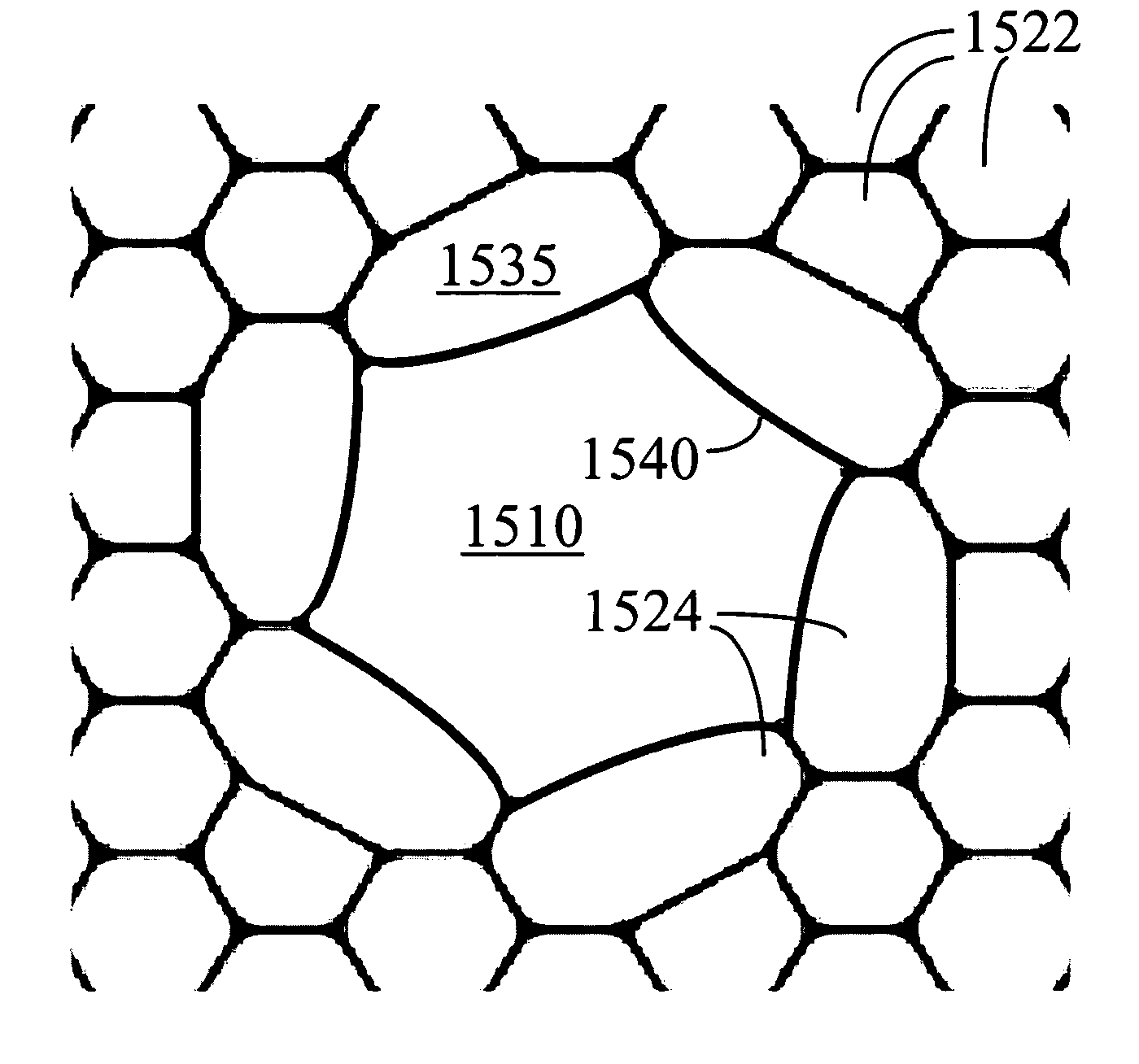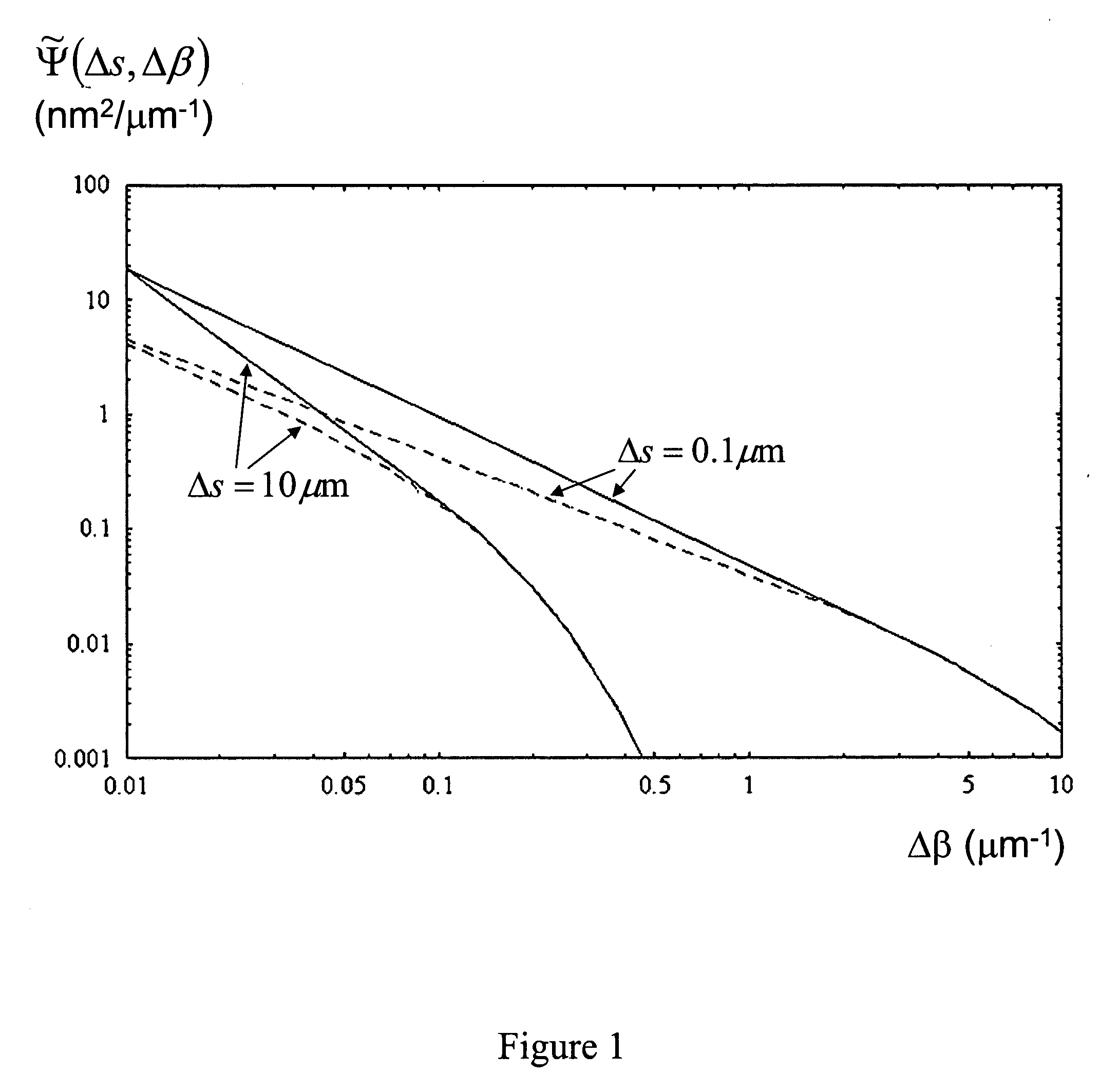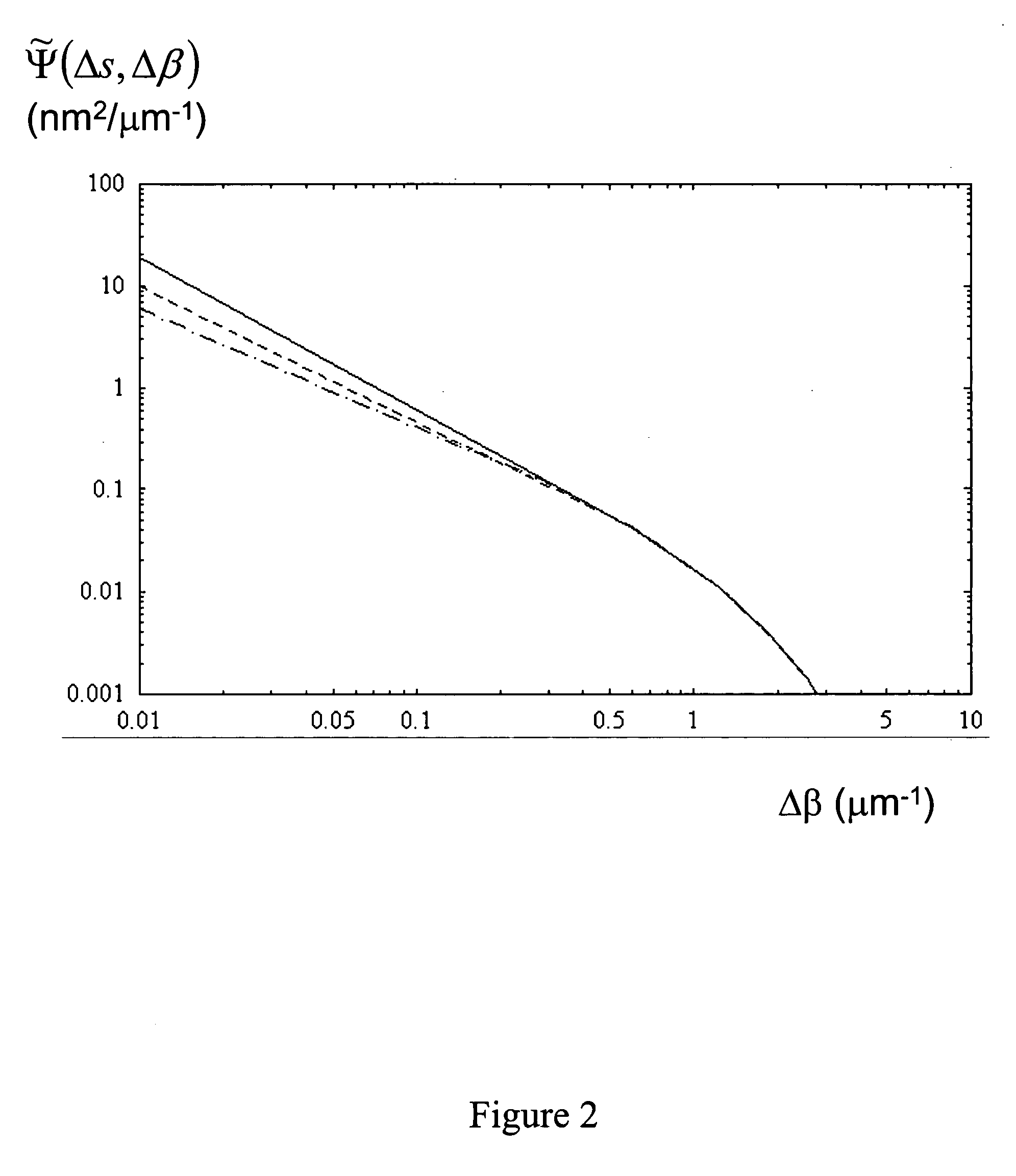Hollow-core optical fiber and method of making same
- Summary
- Abstract
- Description
- Claims
- Application Information
AI Technical Summary
Benefits of technology
Problems solved by technology
Method used
Image
Examples
Embodiment Construction
[0097] As already mentioned, HC-PCF contains a multitude of small, closely spaced air holes together with a relatively large central air hole which defines a guiding core. Detailed calculation of the capillary wave roughness spectrum in such complex geometries is a difficult task, and we have used a simplified analysis to predict the effect of varying fiber geometry. Our simplified analysis is validated by comparing the calculated results with measurements taken from real fibers, as will be described hereinafter.
[0098] We find that the mode propagation loss, characterized by an attenuation coefficient γ, incurred from the surface roughness is given by γ1=k34(ɛ0μ0)(ng2-1)2×∑j=1Nholes∮j′th holeperimeter ⅆs ∮j′th holeperimeter ⅆs′ ∫ⅆβ e~1,jH(s′) Im[G2D(rj+(s′),rj+(s);k,β)] e~1,j(s) Ψ~j(s,s′;β-β1)(1.1)
where ng is the refractive index of the glass, k=2π / λ is the wave number of the light, ε0 and μ0 are respectively the permittivity and permeability of t...
PUM
| Property | Measurement | Unit |
|---|---|---|
| Surface roughness | aaaaa | aaaaa |
| Surface roughness | aaaaa | aaaaa |
| Surface roughness | aaaaa | aaaaa |
Abstract
Description
Claims
Application Information
 Login to View More
Login to View More - R&D
- Intellectual Property
- Life Sciences
- Materials
- Tech Scout
- Unparalleled Data Quality
- Higher Quality Content
- 60% Fewer Hallucinations
Browse by: Latest US Patents, China's latest patents, Technical Efficacy Thesaurus, Application Domain, Technology Topic, Popular Technical Reports.
© 2025 PatSnap. All rights reserved.Legal|Privacy policy|Modern Slavery Act Transparency Statement|Sitemap|About US| Contact US: help@patsnap.com



